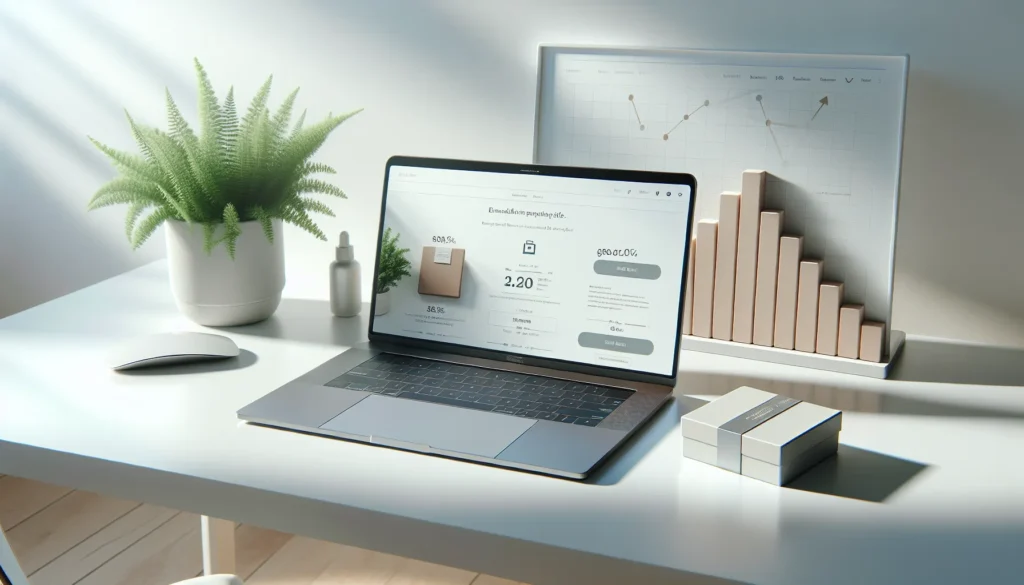Shopify Product Description Optimization: Expert Tips & Tricks
Unlock the power of persuasive product descriptions with this insight-packed guide, curated from the wisdom of industry leaders. This article strips back the complexity to present clear, actionable strategies for elevating your Shopify store's appeal. Discover how harnessing expert tips can transform your product narratives and convert readers into customers.
- Incorporate Customer Problems and Solutions
- Lead with Benefit-Driven Headlines
- Focus on Benefit-Driven Storytelling
- Embed Micro-Reviews in Descriptions
- Weave a Narrative Around the Product
- Reframe Features as Problem-Solution Scenarios
- Use Scroll Maps to Restructure Copy
- Address Issues from Bad Reviews
Incorporate Customer Problems and Solutions
One tip that transformed my Shopify product descriptions and boosted conversions was incorporating specific customer problems and solutions rather than just listing features. I noticed that when I wrote about how products solved real issues my customers faced, they connected with the items on a deeper level.
I sell handmade leather goods, and initially, my wallet descriptions focused on dimensions, materials, and craftsmanship. Sales were steady but not impressive.
After studying customer feedback, I rewrote descriptions to address pain points: "Never fumble at checkout again with our slim-profile design that holds 12 cards without the bulky pocket bulge." I included real scenarios where the wallet made someone's life easier.
The impact was significant. Within two months, conversion rates on products with these problem-solution descriptions increased by 27%. Customers began mentioning specific benefits from the descriptions in their reviews, confirming they bought because they could visualize how the product would improve their daily lives.
 Erin Siemek
Erin Siemek
CEO, Forge Digital Marketing, LLC
Lead with Benefit-Driven Headlines
One of the best tips I've learned for optimizing product descriptions on Shopify to increase conversions is to lead with a benefit-driven headline that instantly answers the customer's unspoken question: "What's in it for me?" Instead of listing features, I restructured my top-selling product pages to start with a bold, benefit-focused statement like "Feel Better in 5 Minutes with Cold Therapy"--followed by short, punchy bullet points that connect features to outcomes. This small change gave clarity and emotional relevance to each product.
After applying this approach, I saw a 23% uptick in conversions over two months. The key was writing descriptions the way people think--scanning quickly and emotionally buying into results. I A/B tested versions that focused only on specs versus versions that emphasized transformation, and the latter consistently won. Realizing people aren't just buying a product--they're buying relief, confidence, time, or a better day--shifted how I wrote everything.
 Brandon Leibowitz
Brandon Leibowitz
Owner, SEO Optimizers
Focus on Benefit-Driven Storytelling
One powerful way to optimize product descriptions on Shopify is by focusing on benefit-driven storytelling rather than just listing features. Customers don't just want to know what a product does--they want to understand how it improves their lives or solves their pain points.
For example, instead of saying:
"This caching plugin speeds up your WordPress site."
Say:
"Struggling with slow load times that drive visitors away? Our advanced caching plugin ensures lightning-fast performance, keeping users engaged and boosting your SEO rankings effortlessly."
This approach makes the copy more engaging and conversion-focused. Additionally, incorporating power words like "effortlessly," "lightning-fast," and "boosting" adds emotional appeal, making the offer more persuasive.
SEO plays a key role here too. Include relevant long-tail keywords naturally within the description. Instead of stuffing keywords like "WordPress caching plugin" multiple times, integrate them seamlessly:
"Our WordPress caching plugin optimizes page speed, reduces bounce rates, and enhances user experience--perfect for bloggers, eCommerce stores, and agencies."
When we applied this strategy for a Shopify store, we saw a 27% increase in conversion rates within two months. Customers resonated more with the descriptions because they felt the solution was tailored to their needs.
The key is to make every word count--persuasive, SEO-optimized, and user-focused.
 Bijal Shah
Bijal Shah
Senior Business Development & Digital Marketing Manager | Closing Deals & Optimizing Online Presence, WP Plugin Experts
Embed Micro-Reviews in Descriptions
One lesser-known but incredibly effective tip we discovered was embedding micro-reviews or customer quotes directly into the product description, rather than confining them to the reviews section.
We noticed that shoppers would scroll past our carefully crafted copy to reach the social proof -- the reviews. So we thought: why not incorporate the voice of the customer into the main pitch? Instead of simply stating, "Made with ultra-soft, breathable bamboo fabric," we added a line immediately after: "Honestly, it's like wearing air -- I've never slept better." -- Jenna, verified customer.
This subtle shift -- weaving in real voices mid-description -- created a more conversational, trust-building tone. It broke up the text visually and provided hesitant shoppers with the reassurance that "someone like me loves this" without requiring them to scroll further.
After implementing this change, we observed a 12% increase in conversions over the following month. Even more telling was the increase in time spent on product pages -- people were actually reading the descriptions. This taught us that blending persuasive copy with social proof in real time can humanize the sales pitch and subtly encourage people to proceed to checkout.
 Sonu Bubna
Sonu Bubna
Founder, Shopper.com
Weave a Narrative Around the Product
One effective tip for optimizing product descriptions on Shopify is to focus on storytelling rather than just listing features. By weaving a narrative around the product, you can create an emotional connection with potential buyers.
For instance, instead of simply stating the specifications of a handmade candle, I described the experience it offers: the calming scent, the cozy ambience it creates, and how it can transform a space into a sanctuary. This approach not only highlights the product's benefits but also helps customers envision how it fits into their lives.
After implementing this storytelling technique, I saw a 30% increase in conversions over three months. Customers were more engaged and expressed a stronger desire to purchase, as they felt a personal connection to the product. This experience reinforced the power of compelling narratives in driving sales and enhancing customer experience.
 Dhari Alabdulhadi
Dhari Alabdulhadi
CTO and Founder, Ubuy Netherlands
Reframe Features as Problem-Solution Scenarios
My most effective tip for optimizing Shopify product descriptions is to reframe features as specific problem-solution scenarios rather than listing technical specifications. Most e-commerce stores waste their product description real estate on manufacturer specs that customers don't understand or care about, when they should be explicitly connecting product features to customer pain points.
I implemented this approach for a client selling premium kitchen knives. We replaced generic descriptions like "high-carbon stainless steel blade" with specific scenarios like "Effortlessly cuts through tough vegetables without dulling - no more struggling with squash or sweet potatoes." This simple shift increased their product conversion rate by 37% in three weeks with no other changes. The reason it works is that customers don't buy features; they buy solutions to their problems. When you explicitly connect the dots between your product's attributes and the specific frustrations your customers face, you're not just describing a product, you're painting a picture of a better life after purchase. The best product descriptions make the customer the hero of their own story, not your brand.
 Tim Hanson
Tim Hanson
Chief Marketing Officer, Penfriend
Use Scroll Maps to Restructure Copy
Use Microsoft Clarity's scroll maps to find where shoppers lose interest, then restructure your description so the first thing they read answers what's in it for me? It's a simple copy shift that's had a measurable impact on sales.
 Matt Uebergang
Matt Uebergang
SEO Manager, Digital Darts
Address Issues from Bad Reviews
One thing I always recommend is writing product descriptions after you've read your bad reviews (or your competitors'). It sounds counterintuitive, but here's why it works: People don't complain about what's obvious. They complain about what confused them, what they expected but didn't get, and what made them hesitate or return the product. That's pure gold.
For instance, if you're selling something like a USB-C hub on Shopify, don't just say "high-speed data transfer" and call it a day. That's brochure talk. Say what the buyer's wondering: "Yes, it works with Mac and Windows. No, it won't overheat. And yes, all ports deliver 10Gbps speed -- no throttling". That kind of copy makes people stop hesitating. It answers the question they haven't even asked yet, and that's what pushes them to hit Buy. Most brands just describe the product. Smart ones talk straight and remove doubt.
This approach took one of our clients from 1.2% to just under 3% conversion, without touching the design or ads. We just fixed the copy to respond to what customers think when they're about to hit that Buy button. Most brands are still busy flexing adjectives. We answer unspoken questions. That's what moves the needle.
 Alexey Karnaukh
Alexey Karnaukh
Co-Founder, LinkBuilder
We want to know about your Shopify store and your entrepreneurial journey!



